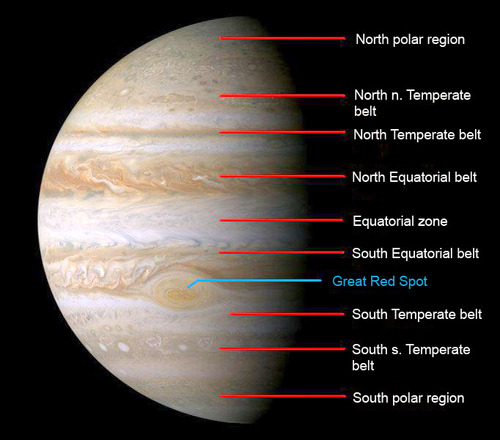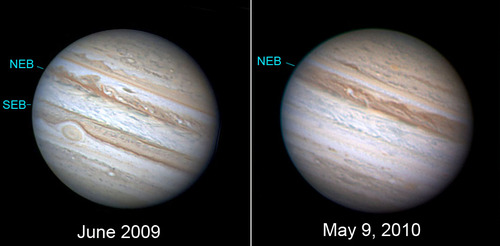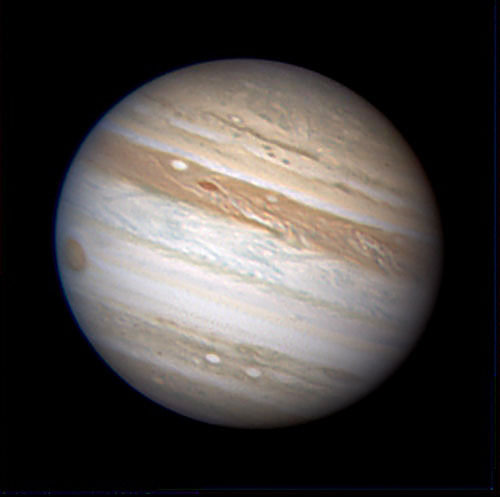
Last winter changes were already underway as the South Equatorial Belt, one of the two most prominent dark "stripes" on the planet, began to fade. Most years you look at Jupiter and besides the four little moons lined up on one side or another of the planet, you'll see two prominent dark grey bands, the north and south equatorial belts. These and Jupiter's other belts are separated by lighter-colored zones giving it a striped appearance. Both belts and zones are composed of ammonia ice crystals which freeze out at 108 degrees below zero, a temperature easily attainable at Jupiter's half-billion mile distance from the sun. Materials like sulfur and phosphorus mixed in with the ammonia are believed responsible for creating the clouds' curious red, brown and yellow tints.
Watch Jupiter rotate and its cloud belts move with the winds. The time-lapse video below was made using images shot during Voyager 1's flyby of the planet in 1979.
The origin of all these belts and zones comes from deep below the planet. Bubbles of warmer air rise to the upper atmosphere and condense into clouds where they're are blown into alternating bands by 350+ mile per hour winds. Jupiter's rapid rotation is at the source of its ferocious winds -- a day on the planet whisks by in just 9.9 hours. This speedy spin coupled with Jupiter's gaseous nature is also the reason the planet is flattened like a squashed meatball instead of being more nearly spherical.

The SEB is one of the most active areas on the planet for weather changes. Every 3-15 years, the belt, which is normally dark reddish-brown in color and typically divided in two by the south equatorial belt zone, fades from view. After some weeks or months a brilliant white spot forms within that zone and begins spouting dark blobs of material which get stretched into filaments and ovals by Jupiter's fierce winds into a new SEB. Within a few weeks (or longer) the belt is back and Jupiter presents its familiar dual "tire track" appearance through a telescope.

To find Jupiter, go out about an hour before sunrise and look a fist or two above the horizon in the east-southeastern sky. It's the only bright "star" you'll see there.



Reader Comments
to our Newsletter